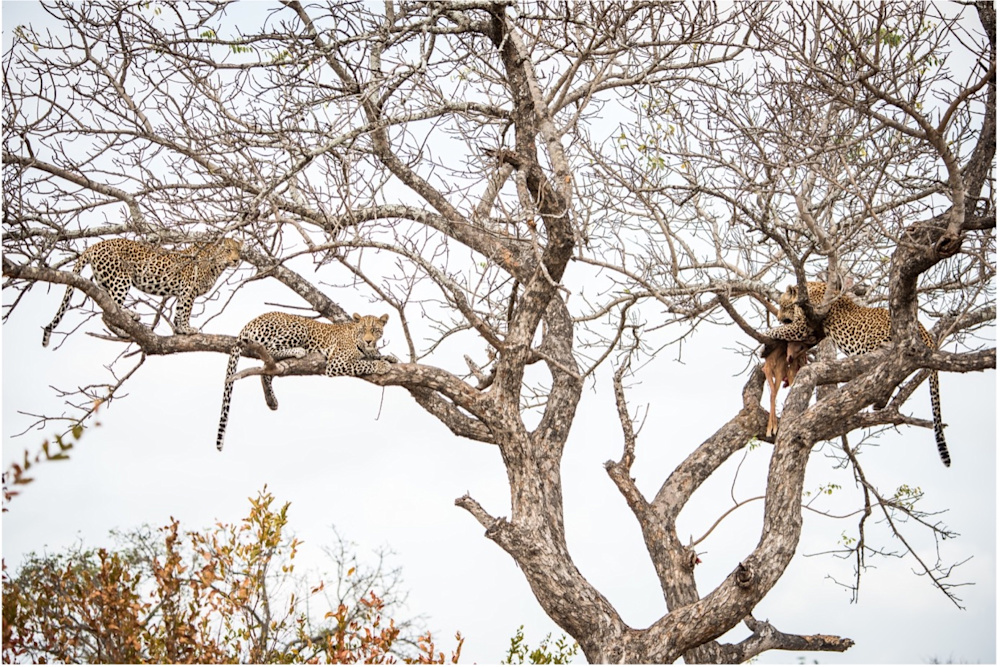May 2021
Risky Business
Share:
Risky Business
Female leopards have an incredibly tough task when it comes to raising cubs. Not only are they constantly having to provide meals for them, but also having to move them around regularly to locations that provide enough cover and trees for the cubs to take refuge from dangerous enemies.
Lions, hyena and even African rock pythons when the cubs are still very small are constant threats. What also sometimes occurs is infanticide. Infanticide is a widespread but seldom observed behaviour that has been shown to convey strong selection forces on some social mammals. However, infanticide in non-social species is less clearly understood, particularly the evolutionary function of infanticide. Further study of leopards in the Sabi Sand Wildtuin, where Singita is located, revealed that male leopards typically improved their fitness by accelerating their opportunity to father offspring, which extended their reproductive lifespans. Cannibalism may provide further incentive for infanticide but this is likely to be an added benefit rather than the primary driver for the behaviour. Something which was also revealed from the study is that infanticide was more often occurring when new young male leopards, around the ages of four to five years, were beginning to take over a new territory (G. Balme et al 2013). Currently at Singita we have several new young males that are beginning to push into the territory of the Nyeleti male leopard, the current dominant male along the Sand River here at Singita Sabi Sand.
We recently had a sighting of the Schotia female leopard, her male cub and the father of the cub, Nyeleti male. Male leopards often rob females of their kills (clearly seen in this image) which is a perk of being both dominant and much larger than their female counterparts. This is a dangerous time for the cub as I have on one particular occasion witnessed a male leopard inadvertently kill its own offspring that tried to approach the carcass recently stolen. This does not occur very often but the risk is certainly still there.

This particular male leopard was also once seen killing a female leopard which in a similar scenario, tried to defend her cub trapped in a tree where the male had ascended to take over a carcass. The female successfully protected that cub but lost her own life in the process. In that scenario the Nyeleti male leopard was not the father of the cub and almost certainly would have killed a cub he had not sired.
Female leopards are better off just abandoning their prized kill to the dominant male, and making another kill at a later stage. There is an abundance of prey for leopards on the Singita property and this is one of the reasons leopards thrive so well here.

By Gareth Poole
Field Guide